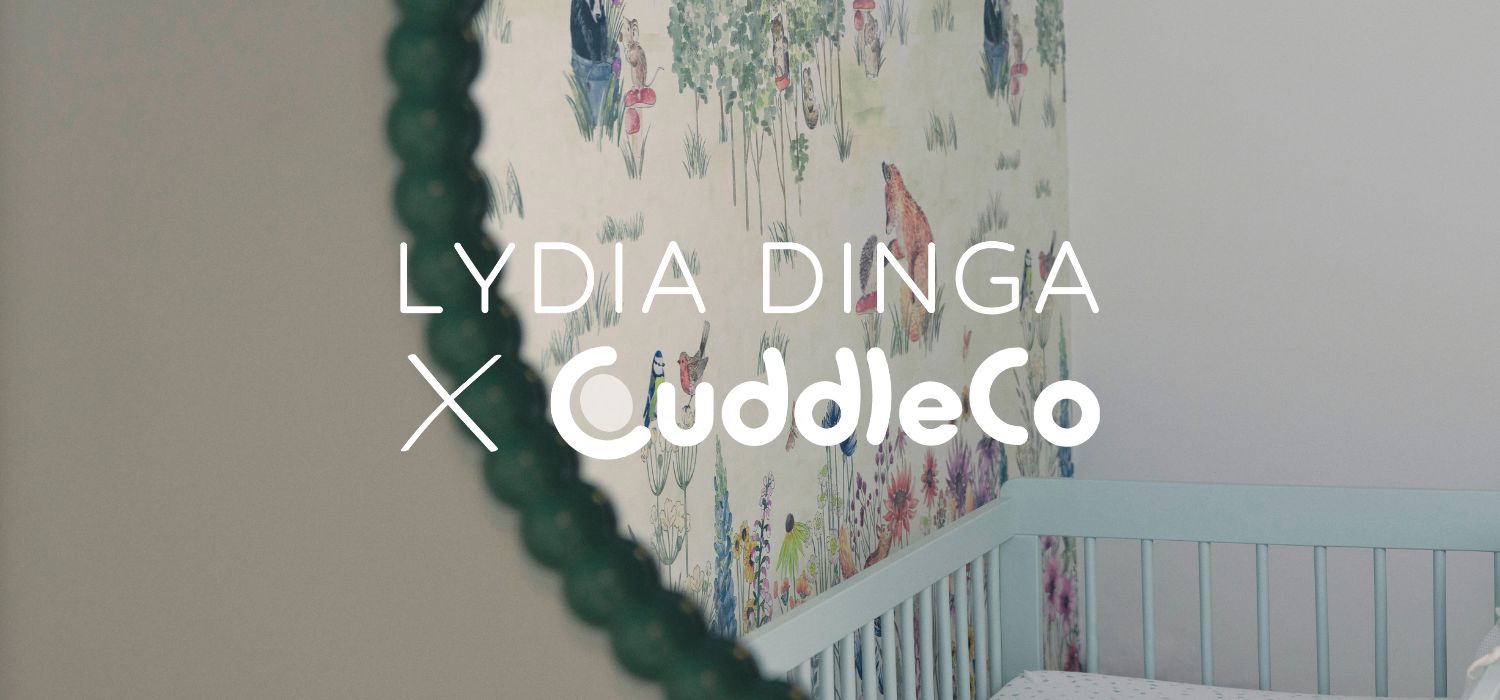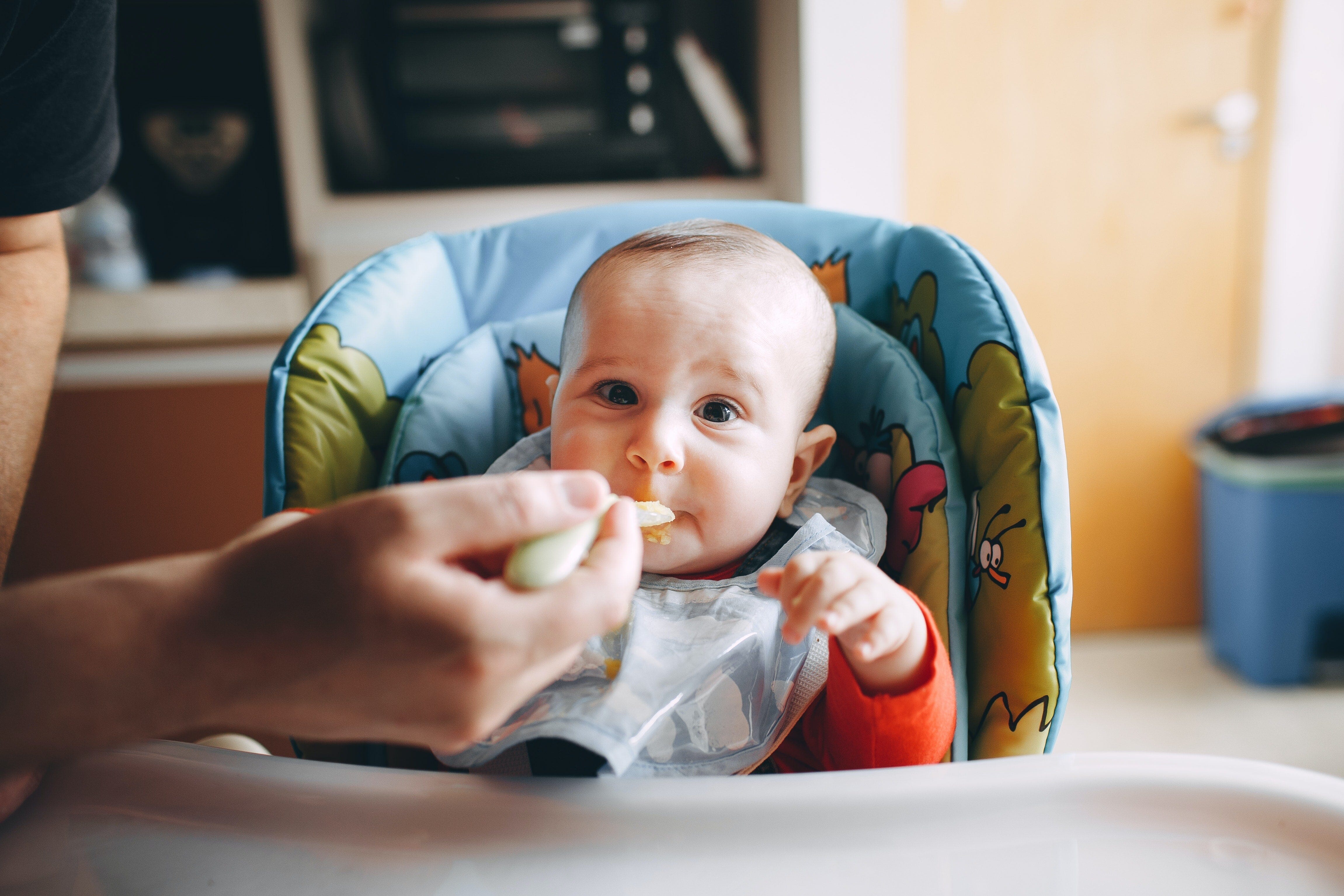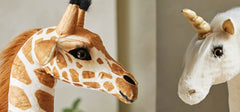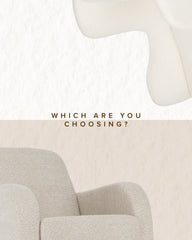Looking for something specific?
Take a look at our blog categories and get the advice and guidance you need!
check out our latest articles
Designing Nurseries

Choosing a nursery style is one of the most exciting parts of preparing for your baby’s arrival, but with so many trends to explore, it can be hard to know where to begin. This year, nursery design is moving towards calmer colours, softer textures and more personal touches that make the room feel truly yours. From colour-drenched walls to earthy palettes and vintage upcycling, 2025’s trends are all about creating a space that feels warm, comforting and grounded in real family life. Use these ideas as inspiration, but let your own instincts lead the way. The best nursery is the one that feels like home from the very first day.

At CuddleCo, our Nursery Essentials collection aims to make the nursery feel calm, comforting and stylish for modern family life. From playful cherries to timeless florals and tactile textures, our designs bring personality and practicality into everyday spaces.

Preparing your baby’s nursery is one of those special parts of pregnancy. From setting up the cot to folding tiny clothes, every detail helps you feel calmer, more organised, and ready for what’s ahead. That’s why we’ve created the CuddleCo Textiles Collection, a range designed to make nesting feel simple, supportive and beautifully coordinated.

Lydia Dinga’s nursery reveal has captured the attention of parents and interior lovers alike, inspiring a fresh wave of calm, peaceful, and timeless design in children’s spaces. Her timeless yet practical approach shows just how fun and creative nursery styling can be, proving the smallest of rooms can feel magical and inviting. As part of our collaboration, we sat down with Lydia to ask a few key questions, offering guidance and inspiration for parents planning a nursery of their own.
Expecting Essentials

Looking for a comfortable nursing chair for your nursery? The new Etta Faux Fur Nursing Chair by CuddleCo offers cloud-soft cushioning, gentle rocking and timeless style, designed to support UK parents through feeds, cuddles and everyday nursery moments.

We get this question a lot, so here’s a simple guide to help you choose the right fit. Both the Clara Cot Bed and Clara Mini Cot Bed adapt from a newborn cot into a toddler bed or day bed, giving you long-lasting use. The Clara Cot Bed is spacious and makes a statement in the nursery, while the Clara Mini offers the same timeless style in a compact size, ideal for smaller rooms or maximising space.

Nestled in a dedicated factory here in the UK, each CuddleCo mattress is more than just a sleep surface - it’s a labour of love, designed with safety, comfort, and sustainability in mind.

At CuddleCo, we’ve got two fabulous contenders for the title of Best Seat in the House; meet the Etta and the Marley nursing chairs. They’re both stylish, snuggly, and built for comfort, but they each bring their own flair to your nursery. Let’s dive in and see which chair steals your heart…
Parenting Tips & Support

Converting your CuddleCo cot bed into a day bed is an exciting milestone - one that marks your child’s growing independence and your next step in creating a versatile nursery space.

Turning your cot bed into a toddler bed marks an important moment in your child’s development - and with CuddleCo, it’s easy to do. Within this blog is a step-by-step conversion guide.

Unlike a standard cot, a cot bed adapts as your little one grows. What starts as a cosy, secure cot for those early months can later be transformed into a toddler bed, giving your family years of use from a single piece of furniture.

With parents on our team who have children ranging from newborn all the way through to teenagers, we’ve gathered some honest, heartfelt pregnancy tips straight from our own office. Whether you’re in your first trimester or counting down the days to your due date, here are 11 self-care tips for pregnancy. These are the small but meaningful things that helped us navigate pregnancy - shared in the hope they’ll help you too.
On Trend; Parent Edition
We all know toddlers can be tiring so we’re here to help where we can with the best advice for toddlers. from meal advice to helping with the first steps of life, we hope we can make parenting a little easier!

New year, new nursery. Whether you’re preparing for a new baby or refreshing a well-loved space, small changes can make a big difference. From clever storage and timeless nursery furniture to cosy finishing touches, discover easy, affordable ways to refresh your nursery for the year ahead, without starting from scratch.

Bring magic into your child’s nursery with CuddleCo’s soft standing giraffes and unicorns. Perfect for Christmas gifting, toddler presents and baby shower gifts. These charming plush animals double as décor, encourage imaginative play and make a standout addition to any nursery or playroom.

Discover thoughtful, design-led Christmas gifting with CuddleCo’s expertly curated guide for babies, toddlers and mums-to-be. Perfect for UK families, friends and gift-givers looking for presents that feel considered, beautiful and built to last.

Celebrate World Breastfeeding Week 2025 with CuddleCo and Pippeta! In honour of this year’s theme Invest in breastfeeding, invest in the future, we’re giving one lucky mum-to-be the chance to win the ultimate breastfeeding bundle. Featuring our bestselling Etta Boucle Nursing Chair and Pippeta’s award-winning feeding essentials, it’s the perfect prize for any new mum.
Latest From CuddleCo

Mission Christmas supports children across the UK by ensuring every child can experience the magic of Christmas morning. Learn how you can help make a difference this festive season.

We’re so excited to share our first collaboration with interior lover and lifestyle vlogger Lydia Dinga. Known for her colourful yet carefully considered aesthetic, Lydia has been documenting her renovation journey through her dedicated interiors account, @lydiadingahome, where she shares design inspiration, renovation updates, and invites her followers along for the ride.

Award-Winning Nursery Style
CuddleCo’s Aria Wave Crib and Aria Clothes Rail have both won Gold at the 2025 Absolutely Mama Awards – recognising thoughtful design, trusted quality and timeless style.
From handwoven rattan details to space-savvy solutions, each piece blends beauty with practicality to help new parents create a nursery that feels calm, comforting and completely their own.
Explore our award-winning collection at cuddleco.co.uk

We’re thrilled to share that CuddleCo has been nominated in this year’s Absolutely Mama Awards - for the second year in a row! We’re up for not one, but two exciting categories: Best Interiors/Nursery Product and Best Cot, Crib or Moses Basket – a title we proudly took home last year.
Hosted by Absolutely Mama, the UK’s leading lifestyle and parenting magazine, the awards celebrate standout brands loved by stylish, modern mums. With expert insights, parenting advice and curated content, Absolutely Mama is a go-to for families seeking quality and inspiration across all areas of motherhood.
Baby Weaning & Recipes

Starting to wean your baby can be overwhelming for both you and your little one. You might have lots of worries and questions about how to get started or what method is best. Paediatric Dietitian, Kat Martinez-Thomas, has written a guest blog post that will help you start your weaning journey with confidence.
One of the main questions parents have when it comes to weaning is exactly HOW to start. It can be quite overwhelming when looking on the internet, especially with the rising popularity of “baby-led weaning” in recent years.
This blog will cover the differences between traditional and baby-led weaning, as well as the pros and cons of both methods, and highlight what to consider when starting your baby on solid foods.
What is baby-led weaning?
Whilst traditionally babies have been offered pureed food at the start of weaning, baby-led weaning means skipping the purees and offering finger foods instead. The idea is that the baby is in control of what, and how much, they eat, rather than being fed by an adult – hence the term “baby-led.”
What are the benefits of baby-led weaning?
There are many benefits to baby-led weaning, including:
- Allowing the baby independence and autonomy over what they’re eating – this can also help them to follow their own appetite from early on
- Learning to experiment with a wider variety of textures more quickly, and developing skills to pick up food, bring it to their mouth, chew and swallow
- Easier for babies to be involved in family mealtimes and be exposed to more family style foods
- Easier preparation for parents as they can feed baby the same foods they are eating
Are there any cons to baby-led weaning?
One of the main worries parents have with baby-led weaning is around choking. The current research doesn’t show any increased risk of choking from babies that are following a baby-led weaning approach.
Being exposed to a variety of textures as soon as possible, whether through spoon-feeding or finger foods is important to help babies develop and practice the skills needed to become competent eaters.
Some research suggests that babies who follow baby-led weaning take in LESS nutrition at the beginning, as they learn the skills to eat competently. Whilst milk continues to be a main source of nutrition, there are some nutrients, particularly iron, which are important to get from food. Offering plenty of variety of iron-rich foods such as meat, fish, eggs, beans, pulses, nuts and seeds can help to ensure babies get plenty of opportunity to maximise the nutrition from their food.
What about traditional weaning?
Traditional weaning involves spoon-feeding babies purees of different foods and gradually progressing through to more lumpy and textured foods. Many parents may feel more confident following this method, particularly at the start of weaning. It can be slightly less messy than baby-led weaning and parents may find it easier to know how much their baby has eaten. This can help parents to feel comfortable that their baby is getting certain nutrients, such as iron.
Spoon-feeding babies purees can mean it takes longer for them to become involved in family mealtimes, as it’s more difficult to share a meal when feeding your baby at the same time. It can also mean that babies are exposed to less variety of textures, which is important for them to develop and practice the skills needed for eating.
What is the best way to start weaning?
Ultimately, the weaning style parents choose will depend on a variety of factors. There are pros and cons to both baby-led weaning and spoon feeding, and it’s important that parents feel confident in whichever method they follow for feeding their child. Offering a mix of both finger foods and spoon-feeding can be a great way to allow your baby to explore and experiment.
Whether you’re offering finger foods or purees, it’s a good idea to offer as much variety as possible and really allow your baby to try different tastes and textures. It can be a messy time but try to let your baby experiment as much as possible.
It’s perfectly normal for them to want to get stuck in and use their hands or hold the spoon themselves. The more they can feel in control at the table, the more likely they are to enjoy it and feel confident exploring the food on offer.
Whatever way you choose to wean your baby, try to ENJOY the process as much as possible and focus on making the mealtime a positive experience. There’s A LOT for babies to learn during weaning – they need plenty of opportunity to practice and they’ll all get there in their own time!
About Kat
Kat offers weaning and dietary advice to parents and carers looking for extra support feeding their babies and children. Head over to Kat's website to find out more about the services she offers.

Pancake Day is the perfect opportunity for the whole family to sit down together and enjoy some tasty treats. Paediatric Dietitian, Kat Martinez-Thomas, is here to share with you a quick and easy pancake recipe!
Pancakes are an ideal food for babies, and with pancake day around the corner, I wanted to share a super easy weaning pancake recipe that the whole family can enjoy!
These banana pancakes for baby use simple ingredients but are a bit of a twist on the classic recipe. Oats contain energy, fibre, B vitamins and some protein, making them a nutrient-rich food for babies. The banana adds a little extra flavour and texture to the recipe, as well as extra vitamins and minerals, including vitamin C and potassium.
Serve with a dollop of yoghurt and some fruit for a perfectly balanced meal for your baby. Adding a little nut butter, if your baby has tried it before, would be ideal, too!
When can my baby have pancakes?
Pancakes are a great finger food for baby right from early on in their weaning journey. Once baby has started to experiment with different textures, these pancakes are nice and soft and can be cut into ideal shapes for baby to grab hold of to bring to their mouths. They’re a perfect baby-led weaning food – even for parents who may be a little more anxious about offering finger foods.
A note on allergies
This recipe includes eggs, milk and oats – all of which are potential allergens. Make sure your baby has had all of those ingredients before offering them these pancakes. For more on allergens, you can check out the NHS website.
Ingredients

- 1 large banana
- Half a cup of oats
- 75ml milk of choice (see NHS advice on Milk here)
- 1 free range egg
- Sprinkle of cinnamon (optional)
Method
- Simply add all of the ingredients to a blender and blend until you have a batter consistency
- Heat some oil in a pan on a medium heat. When hot, turn the heat down and add around 1 and a half tbsp of batter into the pan – add as many as you can fit with a little room to flip (Keep the heat low to avoid the outside burning)
- Watch them carefully and flip once browning on one side. Use a knife to gently check that they’re cooked all the way through
- Continue until you’ve used up all of the batter – you may need to add extra oil in between cooking
- Cut into strips and enjoy!

About Kat
Kat offers weaning and dietary advice to parents and carers looking for extra support feeding their babies and children. Head over to Kat’s website to find out more about the services she offers.

The start of the weaning journey can be an overwhelming time for both parents and baby. There are many worries parents share when approaching the weaning stage. However, most of these concerns have logical answers.
The most common anxieties parents share are surrounding their baby’s safety. For instance, how to tell the difference between gagging and choking is a fear for many. This is why this Child Safety Week, we want to give you an introduction to safe weaning and address any doubts you may have before you and your baby start the weaning journey.
What is Weaning?
Weaning is the introduction of solid foods alongside your baby’s usual breast milk or first infant formula. Solid foods are usually introduced around 6 months of age.
What is Baby Led Weaning?
Baby-led weaning is where you allow your baby to feed themselves rather than spoon-feeding them. You offer them a selection of foods to choose from themselves.
Weaning Essentials
-
High Chair – your baby needs to learn from an early age that they must be sat down when eating so that they can swallow their food properly. Always make sure that they are sat upright and strapped in. Remember, never leave your baby unattended when eating.
-
Muslin Cloths – you will probably already have plenty of these from when your baby first arrived. But these will also come in handy during spoon-feeding to clean up any spills or sick.
-
Bibs – weaning can get messy. So plastic bibs are the best for the beginning.
-
Plastic bowls – that have individual compartments are ideal to keep different flavours and textures separated. You should also opt for bowls with a suction pad to avoid any accidents.
-
Soft spoons – that are safe for your baby’s gums.
Introducing New Textures
When planning what meals to feed your baby, you should consider the size, shape and texture of the food you will be serving them. It is important to keep in mind that some babies may need smooth or blended foods to start with until they get used to new textures.
However, don’t worry if your baby refuses lumpy textures at the beginning. The NHS encourages you to keep offering your baby lumpy textures. They will get used to them eventually. The introduction of lumpy and mashed food alongside finger foods is essential. It helps your baby learn to chew, move solid food around their mouth and swallow.
Be Patient
Remember that patience is key when introducing your baby to new foods. Eating is a whole new skill for them, and you should always go at your baby’s pace.
How to Serve Food Safely
Hygiene
Babies are highly vulnerable to bacteria that can cause food poisoning. Therefore, you need to be extra careful when preparing and storing food for your little one. Basic hygiene, like washing your hands before preparing food. Should always be followed. But if you need a knowledge refresh, take a look at the BBC Good Food guide to safely preparing and storing food here.
Preparing Food
The main worry mums have when weaning their baby is the risk of choking. Choking can happen at any time with any food. But certain foods, such as small round foods, firm foods and foods with bones, can present a higher risk.


DO
- Remove hard pips and stones from fruit.
- Cut food into narrow batons.
- Avoid round shapes.
- Try grating, mashing, steaming or simmering firm fruits.
- Remove the skin on fruit, vegetables and meat.
- Remove all bones from meat or fish.
DON’T
- Do not give whole nuts to children under 5 years old.
- Do not give babies and young children boiled, hard, gooey or sticky sweets.
- Do not give popcorn to babies and young children.
- Do not give babies chewing gum or marshmallows.
For a full list of foods to avoid read the Start 4 Life safe weaning guide here.
Family Mealtimes
During mealtimes, you and your family members should all sit down together as much as possible. Mealtimes are the perfect opportunity for your baby to observe how you eat. By acting as good role models when eating, they can learn from the beginning how to eat safely. Babies copy their parents and other children, so it is important that you are a positive influence. You can do this by sitting upright, breaking your food up and chewing properly.
Gagging
It is normal for your baby to gag when you introduce them to solid foods. As we mentioned earlier, eating is a whole new skill for them. It will take them time to learn how the regulate the amount of food they can chew and swallow at one time.
Further Information
For more information regarding how to know when your baby is ready to wean. Or how to tell the difference between gagging and choking. You can visit the NHS website. You can also ask a health professional for support.












